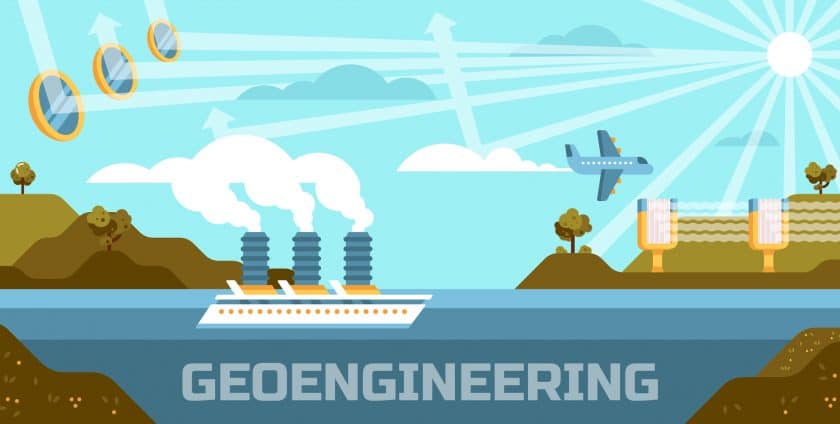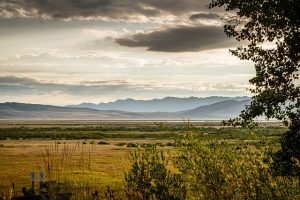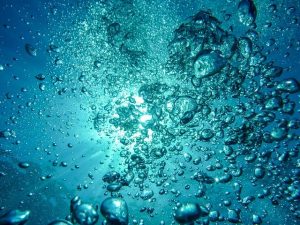
- By: admin
- 0 comment
Top Ten Carbon Capture options – Part Two
In the first article I discussed what are probably the more practical of the Top Ten Carbon Capture options. The following five options are scientifically possible, but converting theory of these five of the Top Ten Carbon Capture options into practice, may not be easy.
6. Biochar
Biochar is charcoal that, instead of being burnt as a fuel, is added to soil. Like charcoal, it is produced by burning such things as, wood, crop wastes and animal manure, but in a low oxygen environment. The chemical change that occurs, locks up the carbon in the biochar for hundreds of years. Otherwise the CO2 would be released relatively quickly as the biomass decomposes. The biochar production process does release CO2 during its creation (perhaps up to 50%) but the remaining carbon content is stable for centuries.

Image by Prasert Taosiri from Pixabay
This is not its only benefit. Adding it to soil improves its fertility. The Native Indians in Brazil have used it for 2,500 years. Depending on the process used, bio-oil and syngas is produced to a greater or lesser extent. However, due to its chemical composition, the bio-oil is less suitable as a bio-diesel than other sources.
Like most of these options, large scale exploitation still appears to be some way off. It is a promising area, but costs are still high. Development is hampered by a number of problems. Optimising the production of biochar depends on its end use. Is bio-oil or syngas to be optimised? Biomass power producers, like Drax mentioned earlier, are not set up to create biochar and its production leaves less energy for power production. To succeed, government support is likely to be required for this one of the Top Ten Carbon Capture options. That said, researchers have estimated that the use of biochar could reduce global CO2e emissions by 8 billion tonnes per annum.
7. Soil Carbon Sequestration
Since the start of the Industrial Revolution, the conversion of previously undeveloped land into farmland has added 185 – 370 billion tonnes of CO2 from the soil into the atmosphere. Modern farming techniques such as intensive ploughing, application of industrial fertilisers, and in many countries the burning of crop stubble, has exacerbated the problem. The oxidisation of the soil as it is exposed to the air, by ploughing, has led to vast amounts of CO2 entering the atmosphere.
Proponents of soil carbon sequestration, like the FAO (Food and Agriculture Organisation of the United Nations) advocate some fairly simple changes to farming practices that could reverse the release of CO2 into the atmosphere. These include, grassland reclamation, conservation tillage, the creation of wetlands and ponds, primarily in the tropics and sub-tropics.

Image by Brent Olson from Pixabay
A report was published in 2016 by researchers at the University of Edinburgh, which made the case that Brazil could both increase its beef production and sequester CO2. All without clearing any more of the Amazon rainforest. This is because the type of grass planted in Brazil (Brachiaria) is very effective at absorbing CO2 and storing it as organic carbon in its roots. Counter intuitively, increasing the demand for beef reduces carbon emissions by forcing farmers to make the most out of the pasture, which increases the amount of carbon it stores. A good article on the Carbon Brief Website explains the study in layman’s language.
Unfortunately, the effects of rising global temperature on soil carbon sequestration is unknown. This is of particular concern in regions where droughts are likely.
8. Enhanced Weathering
The process of natural rock weathering is well known. It is caused by slightly acidic (carbonic acid) rain (caused by it having absorbed CO2 from the atmosphere) reacting with the rocks and soils it lands on. It gradually breaks them down into bicarbonate, which washes in to the sea, where the carbon is safely locked up on the seabed. It is estimated that natural rock weathering removes 3% of global fossil fuel

Image by David Mark from Pixabay
Enhanced weathering involves finely grinding rocks into powder, then spreading it on agricultural land. There, microbes in the soil accelerate the chemical reactions. The resulting bicarbonate will again end up in the sea. There are two additional benefits; first, the minerals added to the soil boosts nutrient levels and secondly, the water, which end up in the sea, is more alkaline and helps with the problem of ocean acidification.
A paper published in Nature Climate Change states that globally, up to 3.7bn tonnes of CO2e could be sequestered every year. Another paper in Science Direct suggests that the UK is well placed to exploit enhanced weathering. Potentially the UK could capture up to 430bn tonnes of CO2, but this is a maximum and the “…environmental impact of silicate mineral application to the land surface is not fully understood,” The costs are between £15 and £361 per tonne “…further investigation in this area is required to reduce the uncertainty in the estimated costs”.
A 2017 paper from Stanford University in the USA “estimated cost of up to 600 trillion US dollars, giving it a steeper price tag than direct air capture.” This was because “In order for the technique to be implemented, large amounts of heavy rock must be collected, crushed into a fine powder, and transported before it can be distributed.” Despite these caveats enhanced weathering still shows reasonable potential as a carbon capture option.
9. Enhanced Ocean Productivity
As algae in the oceans reproduce (creating biomass) they remove CO2 from the ocean’s surface waters. The CO2 removed from the sea is replaced by CO2 from the atmosphere thereby reducing its concentration there. When the algae dies, it falls to the sea bed locking in the CO2 it contains for hundreds if not thousands of years. To reproduce, algae require nutrient iron. Ideas include injecting nutrient iron into areas of the ocean that are iron deficient triggering an algae bloom. Another involves pumping nutrient rich water from deep in the sea in to the surface level of the ocean to encourage algae to reproduce and bloom.
There has also been research into the effect the melting of large icebergs has in the Southern Ocean. These icebergs “fertilise” the ocean with iron held in the ice that is released as the iceberg melts. Ironically as the size of icebergs increases with global warming, their impact on the “fertilisation” of algae increases geometrically with the volume of ice contained in each iceberg. Meaning that more CO2 is captured as the climate warms up.
Trials have been carried out, but there are big questions regarding; cost, regulation under international law and possible unintended consequences to the ocean environment. In addition, most of the literature was published between 10 and 15 years ago. As the UN Convention on Biological Diversity has pretty much banned geoengineering experiments, it is doubtful whether this course of action has a future.
10. Increasing Ocean Alkalinity
As stated in section 8, when CO2 dissolves in water it makes it acidic. As we know, the world’s oceans have become more acidic as atmospheric CO2 levels have risen. CO2 absorption could be increased by adding an alkali to water, thereby removing CO2 from the atmosphere and partially off-setting ocean acidification.

Image by Martin Str from Pixabay
Two methods have been suggested. The first is seeding clouds with strong alkali to create alkali rain that takes CO2 out of the atmosphere and eventually ends up in the oceans. The second is to add large quantities of lime (calcium oxide) directly into the sea. Lime is produced by heating limestone, so the electricity used would need to be from a renewable source and emissions from the process captured and stored. It has been suggested that to remove one billion tonnes of CO2 from the atmosphere about 2.5bn tonnes of limestone would be required. Apart from any unpredicted side effects, both options are likely to be challenged under international law.
Top Ten Carbon Capture options Parts One & Two – Conclusions
First, none of these options provides the “silver bullet” to combat climate change. In combination a number of these options could make a significant impact.
Planting trees is the easiest way of sequestering CO2. However, it is a slow process and availability of land a limiting factor.
BECCS looks promising and its “double gain” makes it a good option for biomass fuelled power stations. It should be possible to apply the same technologies to other CO2 emitting industries.
Direct Air Capture (DAC) looks to be impractical, as to make a difference the amount of energy required is huge. That said, under certain circumstances it might become more practical. Look out for our forthcoming blog, “Why Direct Air Capture might just work”.
Building with Biomass will require both industry and government action to make it mainstream. Even then it will only ever be a part of the solution.
Habitat Restoration in the form of Blue Carbon, although less relevant globally, could make a significant contribution to carbon capture on a national scale. Countries like Bangladesh, Colombia and Nigeria would benefit considerably by improving conservation and restoration of their marine ecosystems. They could either use the carbon sequestered to balance their own emissions or sell as carbon credits to other countries, which could be a source of income.
Soil Carbon Sequestration sound a good idea, but recent research still indicates that the effects could be marginal and “[the way to minimise the impact of] agriculture is to stop clearing more land.”
The exploitation of Biochar in the UK, and elsewhere is still hampered by a lack of formal regulation. To be fair, the Scottish Environmental Protection Agency (SEPA) has published an interim regulatory position on the use of waste. However, without formal regulation and governmental direction, development will be slow.
Enhanced Weathering is likely to remain an idea with potential, but due to cost and possible unintended consequences, it is likely to remain just that.
Enhanced Ocean Productivity is also likely to suffer the same fate as Enhanced Weathering. In addition to the cost and possible impacts on the ocean’s ecosystem, there is also the problem of international law and the UN’s attitude to geoengineering experiments. These latter two have probably sealed its fate.
Increasing Ocean Alkalinity, although likely to suffer from the issues affecting Enhanced Ocean Productivity, it might have a future if the seeding of clouds with alkali is proved to be practical. A problem could when the alkali rain falls outside the national boundaries of the state sponsoring the programme. Surrounding countries may hold different views on geoengineering of this type.
If we are to achieve Net Zero by 2050 and limit global warming to 1.5°C more than one of these options will need to go beyond the trial stage. Building with Biomass and Habitat Restoration will have an increasing but limited impact. Biochar may yet garner sufficient investment. However, planting trees, BECCS and DAC (Direct Air Capture) look to be the prime contenders. Thankfully hopeful signs are starting to appear and more governments are demonstrating heightened commitment. Some of the Top Ten Carbon Capture options will be amongst them.
Glen Winkfield
3rd December 2020
